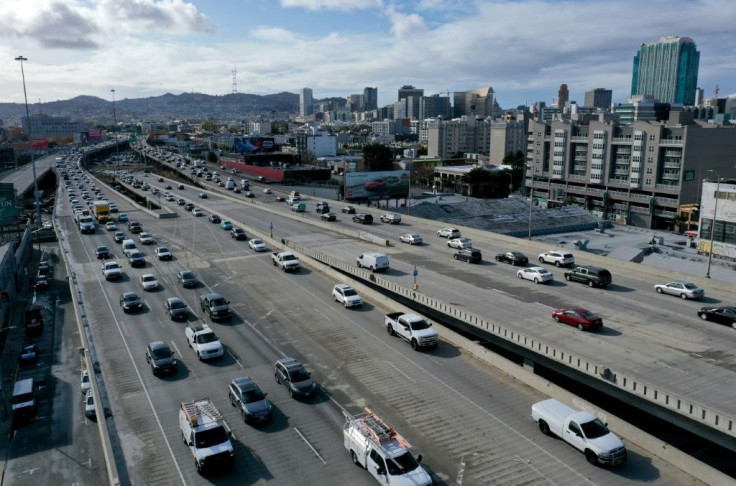How Will Biden Fund His Giant Infrastructure Plan?
President Joe Biden is to lay out trillions of dollars worth of infrastructure investment on Wednesday -- raising the question of how it will be financed.
Built mainly during the 1950s, 60s and 70s, American highways, roads, bridges, railroads, airports and other forms of infrastructure are in a sorry state. They are also in need of a more environmentally friendly update.
The American Society of Civil Engineers (ASCE), which publishes a report every four years on the state of infrastructure, has long been sounding the alarm. Since 1998, the group has given the nation's infrastructure a "D" grade on a scale of A to F.
When it published its latest report this month, the ASCE noted that for the first time, there had been a modest improvement, assigning an overall grade of C-.
But this was still no cause for celebration, since 11 of the 17 categories received a D, including schools, airport facilities, roads and public transportation. Only bridges received a B grade, and everything else got a C.
"The report finds that 45 percent of Americans lack reliable access to transit services," the ASCE said.
Additionally, it estimated the United States' total infrastructure needs over the next 10 years total $2.59 trillion, up from $2.1 trillion.
For its part, the American Road and Transportation Builders Association (ARTBA) estimates that "220,000 US bridges -- 36 percent -- need repair work," while 79,500 need replacement.
Democrats and Republicans agree on the need to modernize aging infrastructure.
Former president Donald Trump had called the nation's infrastructure "decrepit," and in 2018 he proposed a $1.5 trillion plan that never made it to Congress for consideration.
Before him, Barack Obama had in 2014 proposed more than $300 billion in investments over four years to renovate roads and bridges. His plan also failed.
But transportation secretary Pete Buttigieg said Friday during an interview with CNBC that he was optimistic Biden will succeed where his predecessors failed.

Biden believes that large investments are needed to promote sustainable growth while also addressing environmental issues.
He plans to modernize existing infrastructure -- to reduce traffic and pollution, among other things -- and to launch "green" projects in the water, transportation and energy sectors.
The Democrat has not confirmed how much it will all cost, but some media outlets have suggested investments of up to $4 trillion.
Funding is proving to be a real headache, because no form of infrastructure is financed the same way.
For example, airports are managed by private investors, while the interstate highway system was built by the government but is now mainly maintained by states.
Meanwhile, construction and maintenance of secondary roads are done by counties.
Many highways are free to drivers. Without revenue, their maintenance is lacking.
Last week, US Treasury Secretary Janet Yellen told Congress that part of the funding could come from higher corporate taxes -- which Biden's administration wants to raise from 21 percent to 28 percent.
It is also considering raising taxes on the wealthiest Americans, those who make more than $400,000 per year.
Highlighting the complexity of the funding issue, Buttigieg on Friday had proposed a mileage-based tax on drivers, before backtracking to CNN on Monday.
He also ruled out a gas tax, as the goal is to shift to electric cars.
"Infrastructure owners and operators must charge, and Americans must be willing to pay rates reflecting the true cost of using, maintaining, and improving infrastructure," the ASCE said.
If the investments are not made, "America's overdue infrastructure bill will cost each American household approximately $3,300 per year, or $63 per week," the civil engineers society said.
By 2039, chronic underinvestment in infrastructure would cost $10 trillion in GDP, more than three million jobs and $2.4 trillion in exports.
© Copyright AFP 2024. All rights reserved.





















